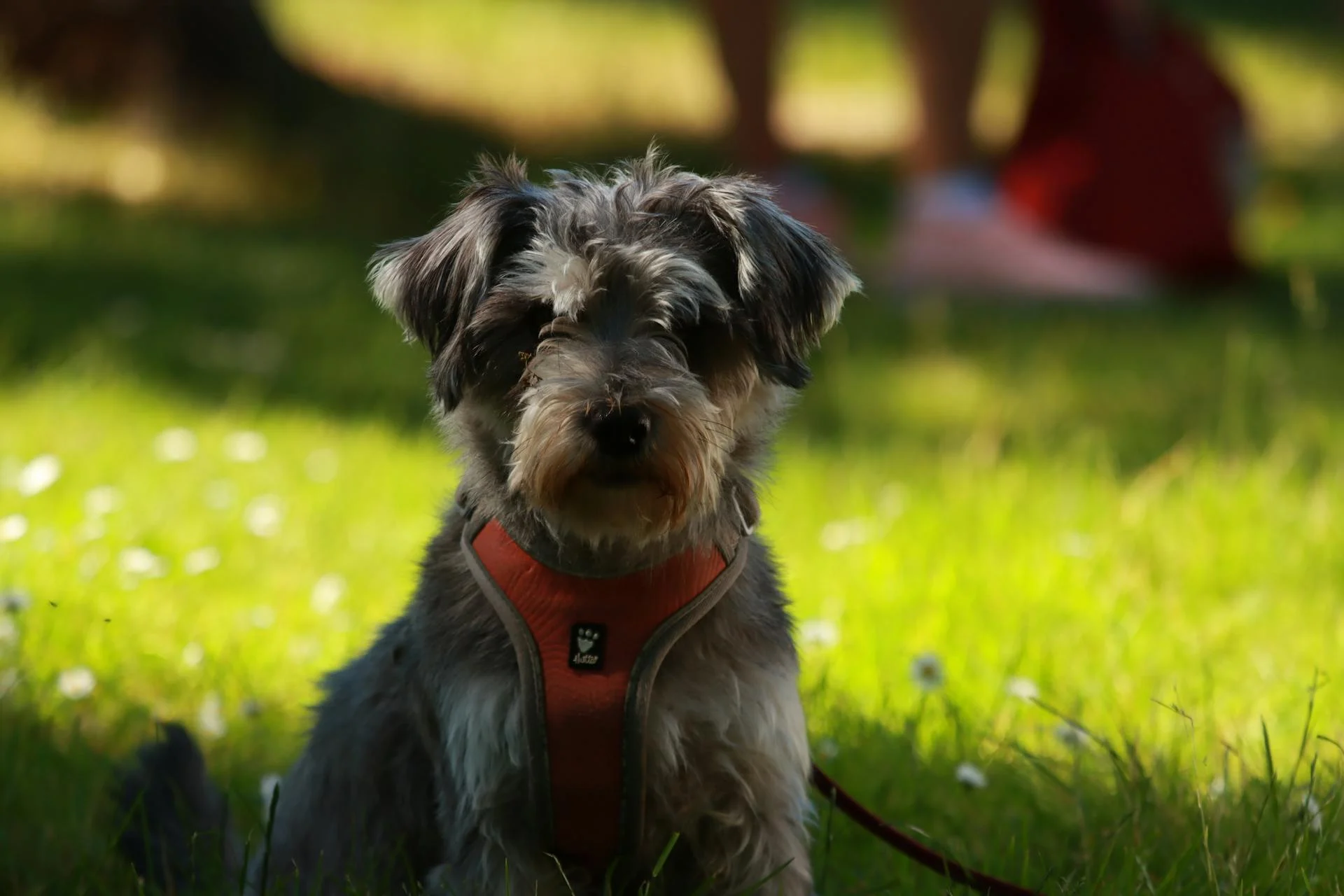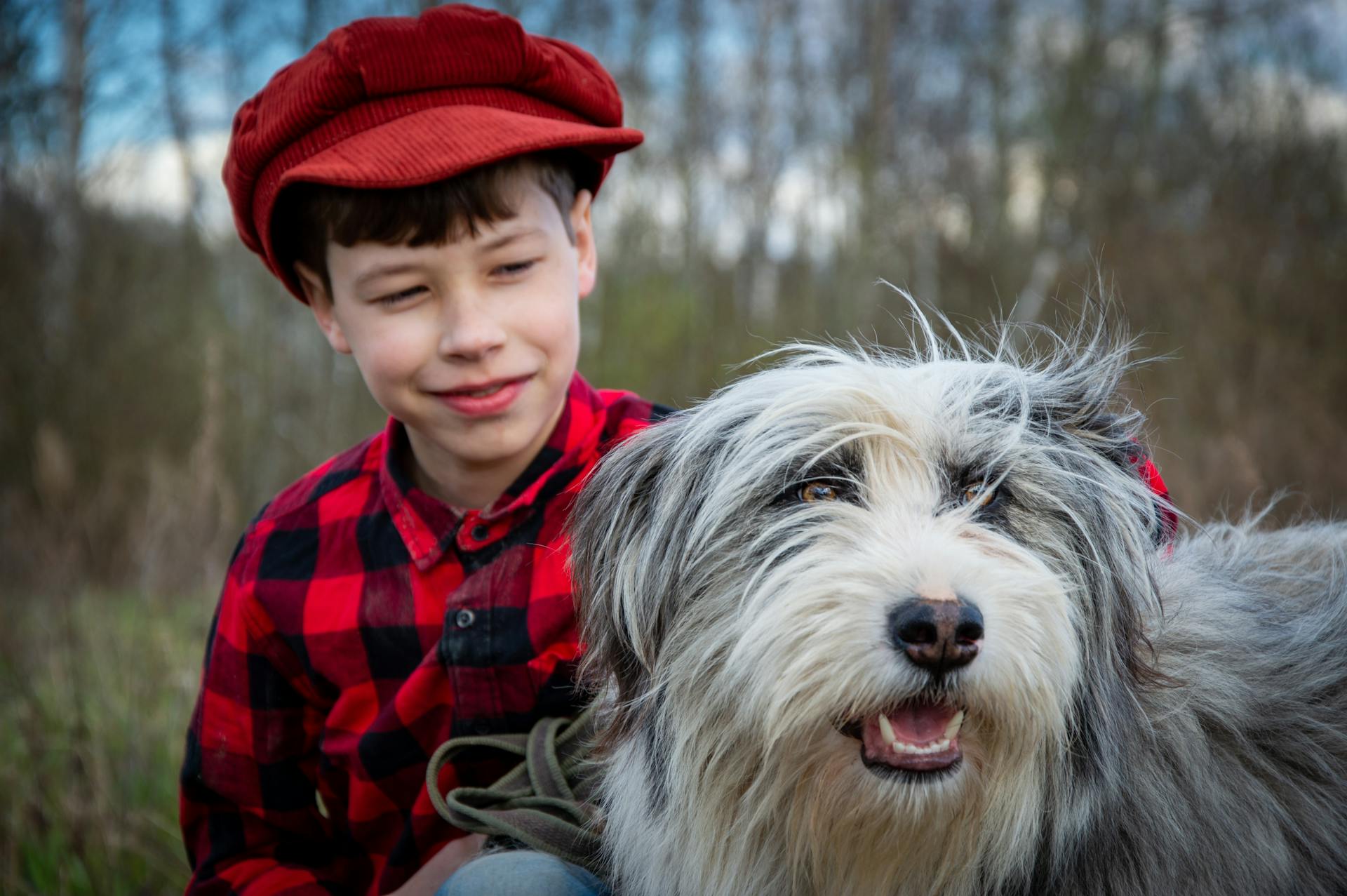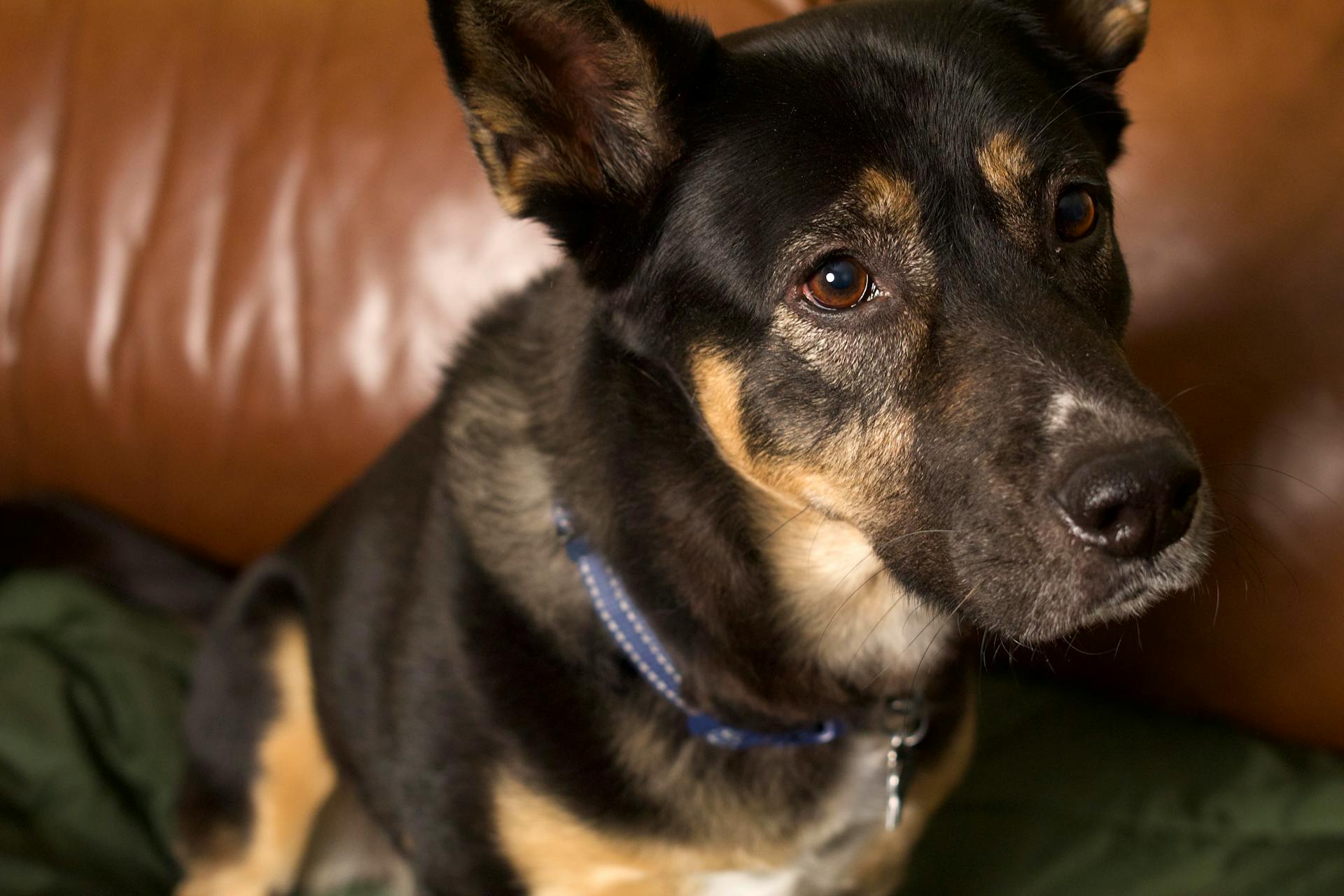
The Bearded Collie Poodle Mix is a unique and lovable breed, but it's essential to understand its needs and characteristics before bringing one home.
This mix is a cross between a Bearded Collie and a Poodle, typically resulting in a medium to large-sized dog with a fluffy coat.
Their intelligence and trainability make them a great choice for active families or individuals who can provide regular exercise and mental stimulation.
They require regular grooming to prevent matting and tangling of their fur, which can be a challenge for some owners.
Their high energy levels mean they need daily exercise and playtime to stay happy and healthy.
About the Breed
The Bearded Collie Poodle mix, also known as the Beardoodle, is a unique and fascinating breed. The Beardoodle's history is unknown, but we can look at the histories of its parent breeds, the Bearded Collie and Poodle.
The Bearded Collie originated in Scotland in the 1500s as a sheep herder, and they're descendants of the Magyar Komondor from Central Europe. They were excellent sheep herders and could drive cattle for miles through rough terrain.
The Bearded Collie was almost extinct in the early 1900s, but Mrs. Willison of Bothkennar Kennels decided to breed them as show dogs, starting the Bearded Collie Club of Britain in 1955. The first litter was born in the United States in 1967.
The Poodle is one of the oldest and most well-known dog breeds, originating in Germany around the 8th century and perfected in France. They're also thought to be related to the North African Barbet.
The Poodle started out as a hunter and retriever but moved on to shows when it was discovered how smart and beautiful they were. They were officially recognized by the American Kennel Club in 1887.
Physical Characteristics
A Beardoodle is a medium-sized dog with good proportion, thanks to genes from either side of the family. His body is lean and muscular with very strong legs.
A Beardoodle typically has a round skull and pendulous set of ears that drop to the sides of his face. His nose is usually black or brown, and his nostrils are open.
The coat of a Beardoodle is one of its most distinctive features. It's dense, wavy, and has a curl to it, and can grow to an incredible length if left untrimmed.
Most Beardoodles have white and black coat colors, but some may feature white, cream, red, and grey coats as well. They don't shed much, except during the high shedding season.
A fully grown Beardoodle can weigh anywhere from 40 to 60 pounds, and stand at a height of 20 inches. However, some may grow bigger than expected, especially if their other parent is a Giant Poodle.
Here are the average height and weight ranges for Beardoodles:
Personality and Temperament
Beardoodles make great family pets because they love everyone as long as they're socialized well as puppies. They are one of the most intelligent breeds, which makes training a breeze.
These dogs are pretty happy with being left alone too, so you don't have to worry about separation anxiety. They're alert, fun-loving, and enjoy playing with other pets and children.
However, they do need to be supervised with young children under school age, as they can get overexcited. With proper training, Beardoodles can be taught to behave around kids.
They're pleasingly affectionate and will appreciate being close to their owners in the living room at the end of a busy day. They're not lacking in brains, so they can quickly learn how to integrate into the family.
Beardoodles are smart and friendly dogs, making them wonderful family companions. They get along with everyone in the family, including children, but do need to be trained on how to behave around young kids.
They're self-confident, super-intelligent, and generally outgoing, which makes them a joy to be around. Expect lots of affection from a Beardoodle, as they love being around their families.
Health and Nutrition
If you're considering bringing a Bearded Collie Poodle mix into your family, you'll want to be aware of the potential health issues that can arise. Your new furry friend may live up to 12-13 years with few health issues if bred correctly.
Hip Dysplasia can be a concern, particularly if your Bearded Collie Poodle mix is taller and has poor hip development. This can lead to arthritis and mobility problems later in life.
Be prepared for the possibility of Addison's Disease, a rare condition that can cause repeated bouts of stomach upsets. While it's not a guarantee, it's essential to be aware of the risk.
Your Bearded Collie Poodle mix may also be born with abnormal eyes due to Collie Eye Anomaly. Regular eye check-ups can help detect any issues early on.
A balanced diet is crucial for your Bearded Collie Poodle mix's overall health. Feeding him a rich, nutritious diet with protein and fiber-rich foods thrice a day is a good practice.
Here are some potential health issues to watch out for:
- Hip Dysplasia
- Addison’s Disease
- Collie Eye Anomaly
- Bloat and digestive issues
Health
Health is a top priority for any dog owner, and it's essential to understand the potential health issues that can affect your Beardoodle.
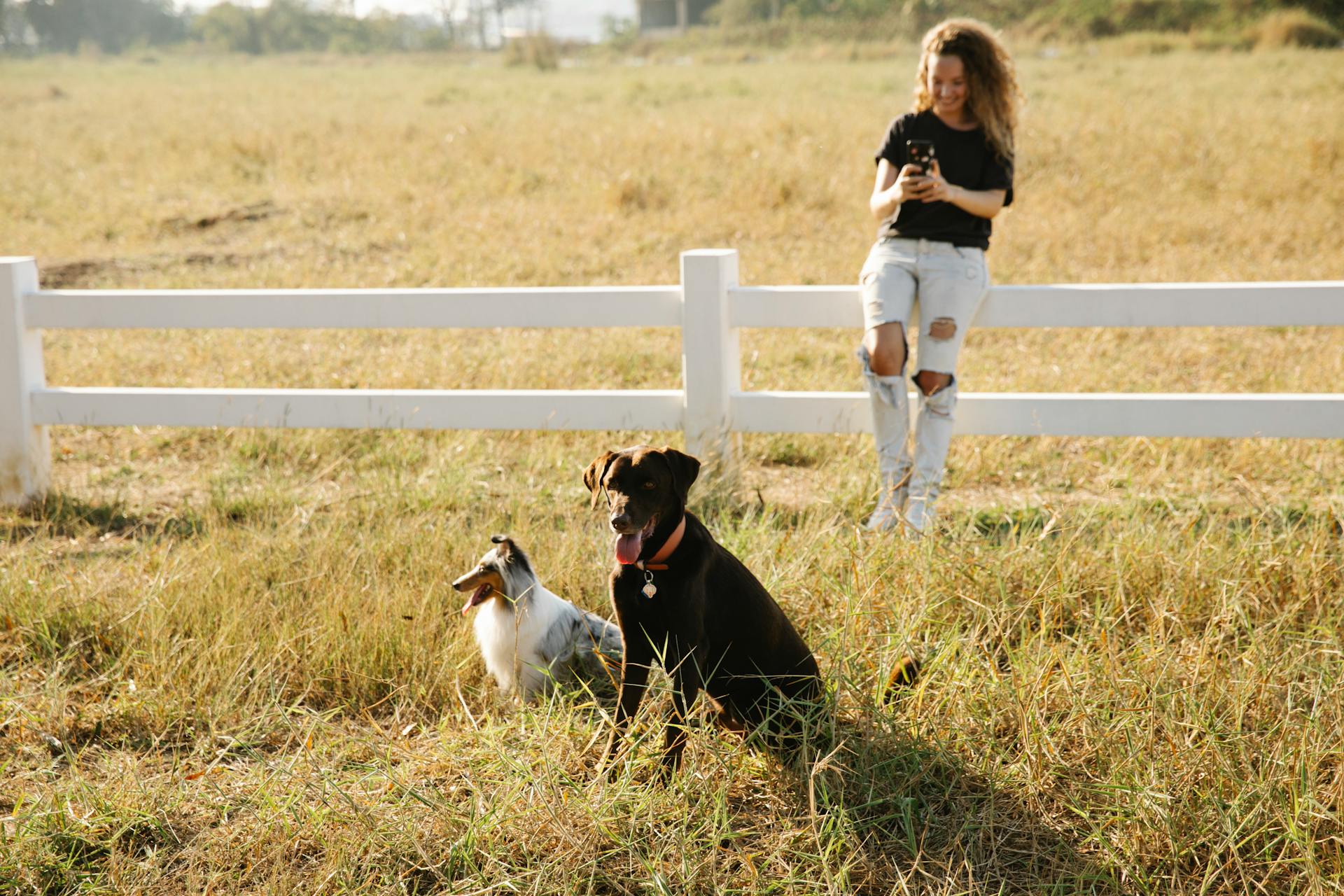
If you breed your Beardoodle correctly, he will live through his 12-13 years with very few (if any) health issues. However, like all mixed breeds, your dog carries the risk of suffering from a number of health diseases transferred from his parents.
Hip Dysplasia can occur if a taller Beardoodle has poor hip development. This can lead to arthritis and mobility issues later in life.
Addison’s Disease, although rare, can cause repeated bouts of stomach upsets. If you notice your dog vomiting or having diarrhea, it's essential to seek veterinary attention.
Collie Eye Anomaly can affect the Beardoodle's eyes from birth, leading to vision problems. Regular eye exams are crucial to detect any issues early on.
Bloat and digestive issues are common in Beardoodles, especially since Poodles tend to have sensitive tummies. Keep an eye out for symptoms like panting, drooling, and a hardened stomach.
Here are some signs of bloat to watch out for:
- Panting
- Drooling
- Tummy ache
- Restlessness
- Enlarged belly
- Hardened stomach
If you notice any of these symptoms, take your Beardoodle to the clinic ASAP, as bloat can be fatal in dogs.
Diet/Nutritional Needs
The Beardoodle's diet is a crucial aspect of his overall health and well-being. He requires a rich, nutritious diet that is specially formulated according to his size, age, and activity level.
Feeding him thrice a day with protein and fiber-rich foods is a good practice. This will help him stay energized and focused throughout the day.
A good diet will also support his growth and development, especially during his puppy years.
Price
You can adopt a Beardoodle for as little as $300, which is a much more affordable option compared to buying one.
On average, you need anything between $600 and $6,000 to buy a Beardoodle.
Physical Activity
Physical activity is a crucial aspect of a Bearded Collie Poodle mix's life. They need at least 60 minutes of exercise daily.
To keep your Beardoodle happy and healthy, provide at least one hour to 90 minutes of exercise daily. This can include activities like agility training, playing frisbee or flyball, hiking, swimming, or taking a walk around your neighborhood.
Some of their favorite activities may include playing with other dogs at the dog park if you have one nearby. This social interaction is essential for their mental and physical well-being.
A solid 60-minutes of daily exercise should be provided at a minimum. This can be broken down into shorter sessions throughout the day, such as a morning walk and an afternoon playtime.
Here are some examples of activities that your Beardoodle might enjoy:
- Fetch
- Digging
- Chasing
- Tug-of-war
- Swimming
- Treasure hunting
Outdoor hikes are always greatly appreciated, and can be a great way to provide your Beardoodle with the physical and mental stimulation they need.
Grooming
Beardoodles need to be brushed daily to prevent their thick, curled fur from tangling.
Their coat can get matted easily, so brushing at least four or five times a week is recommended, preferably every day.
You'll also need to use a dematting tool to remove dead hair and prevent tangles.
Some Beardoodles may need to be groomed with a trimmer if their coat is too thick and gets matted easily.
Cleaning your dog's ears once a week with a moist cotton ball is essential to prevent infections.
Look for redness, irritation, dirt, and debris when cleaning your Beardoodle's ears.
Trim their toenails when needed to keep them from getting too long.
Brushing their teeth once or twice a week can help prevent dental problems.
Trainability
The Beardoodle is a highly trainable breed, bred to work and excel in their roles as companions. They're incredibly clever and dedicated, always eager to please and perform to the best of their ability.
Their trainability is impressive, with most Beardoodles picking up on new tasks quickly and becoming the stars of their training classes. They thrive on mental stimulation and variety, so trainers need to keep them engaged with a range of activities.
Beardoodles can master new challenges with ease, but they do require trainers to keep them on their toes with varied and increasingly thought-provoking sessions. This is especially true when it comes to activities like agility, Flyball, and herding lessons.
Other Important Facts
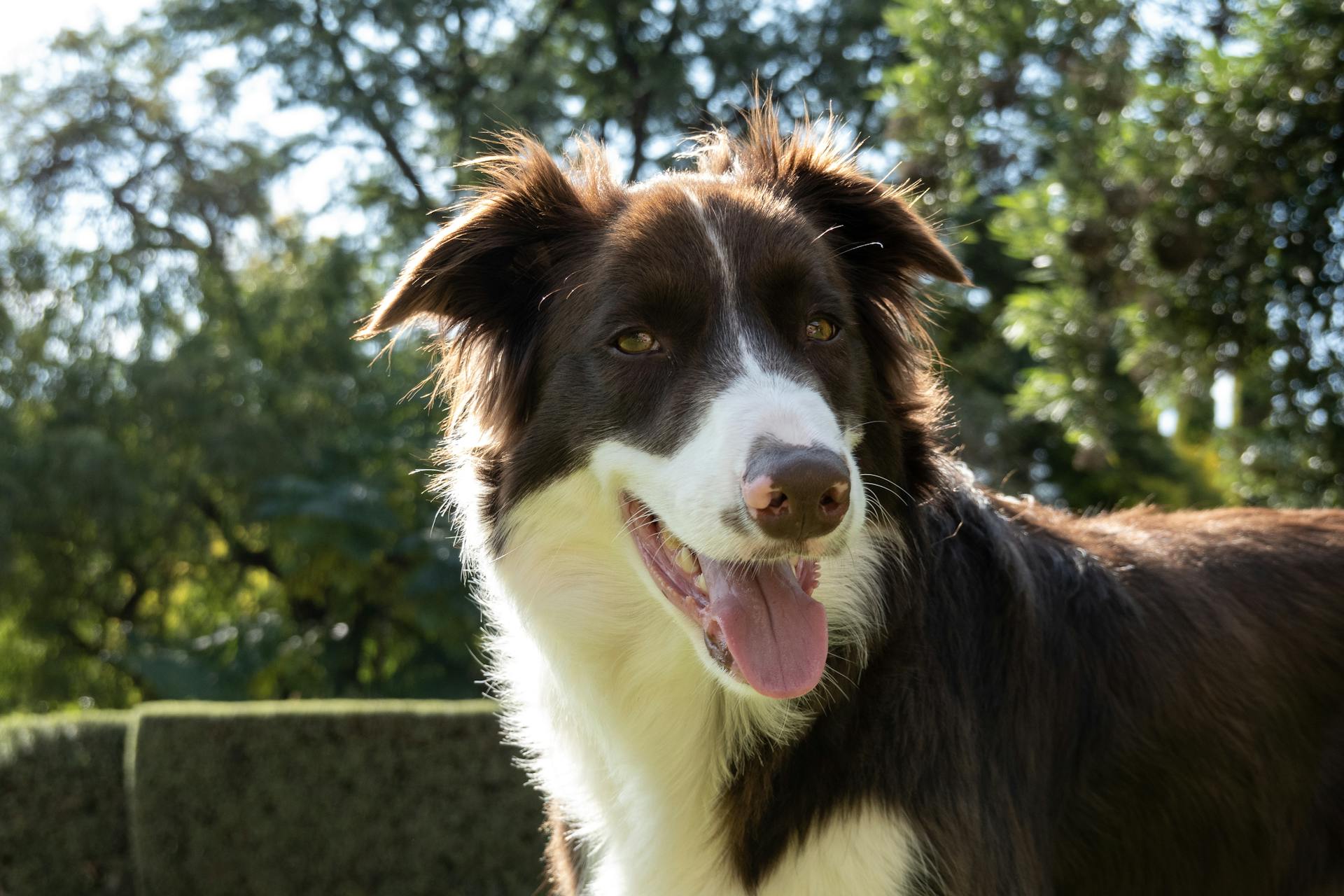
The Beardoodle family has a fascinating history, dating back to the 80s when breeders first started creating crossbreeds between purebred dogs. Over the next 20 years, the Beardoodle gained popularity worldwide.
Beardoodles are a great choice for people with allergies, as they shed less compared to other breeds. This makes them an ideal companion for those who want a low-maintenance furry friend.
Although Beardoodles aren't recognized by the American Kennel Club, they are members of the Designer Breed Registry (or DBR).
Frequently Asked Questions
What is a bearded doodle?
The Beardoodle is a medium-sized hybrid breed resulting from the cross between a Bearded Collie and a Poodle. This unique mix combines the Collie's intelligence with the Poodle's low-shedding coat, making it a popular choice for many dog owners.
What is a Bearded Collie mixed with a poodle?
The Beardoodle is a medium-sized breed resulting from a cross between a Bearded Collie and a Poodle. This unique mix combines the intelligence and trainability of a Poodle with the friendly and outgoing nature of a Bearded Collie.
Featured Images: pexels.com
